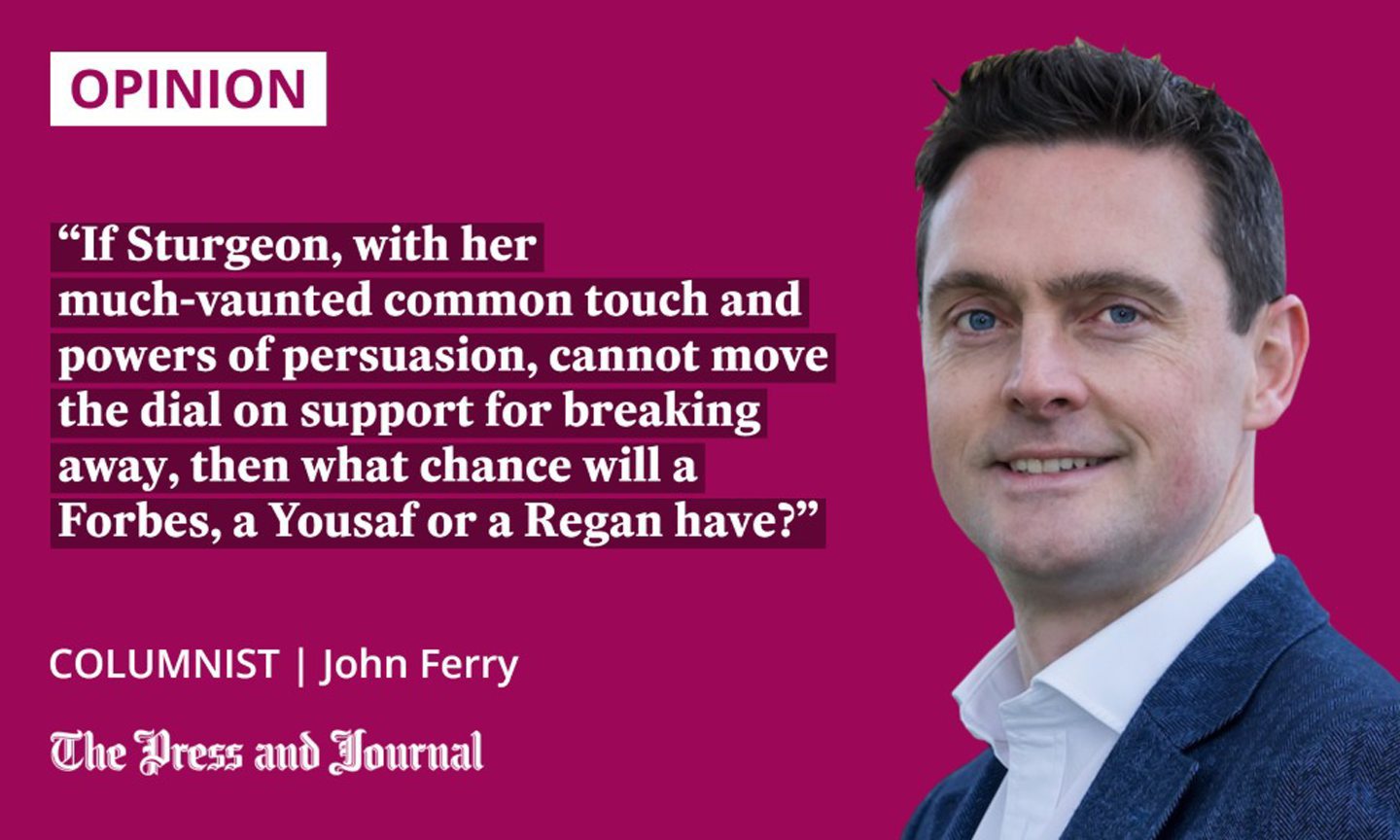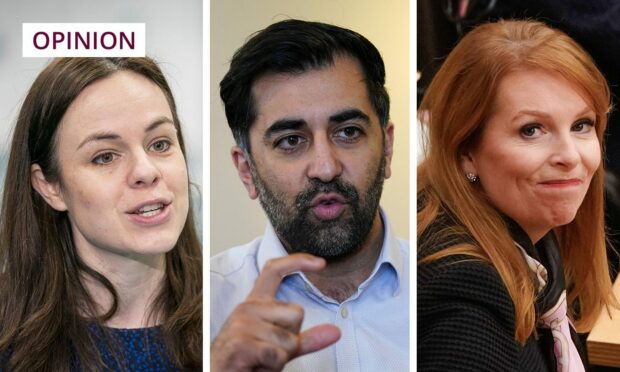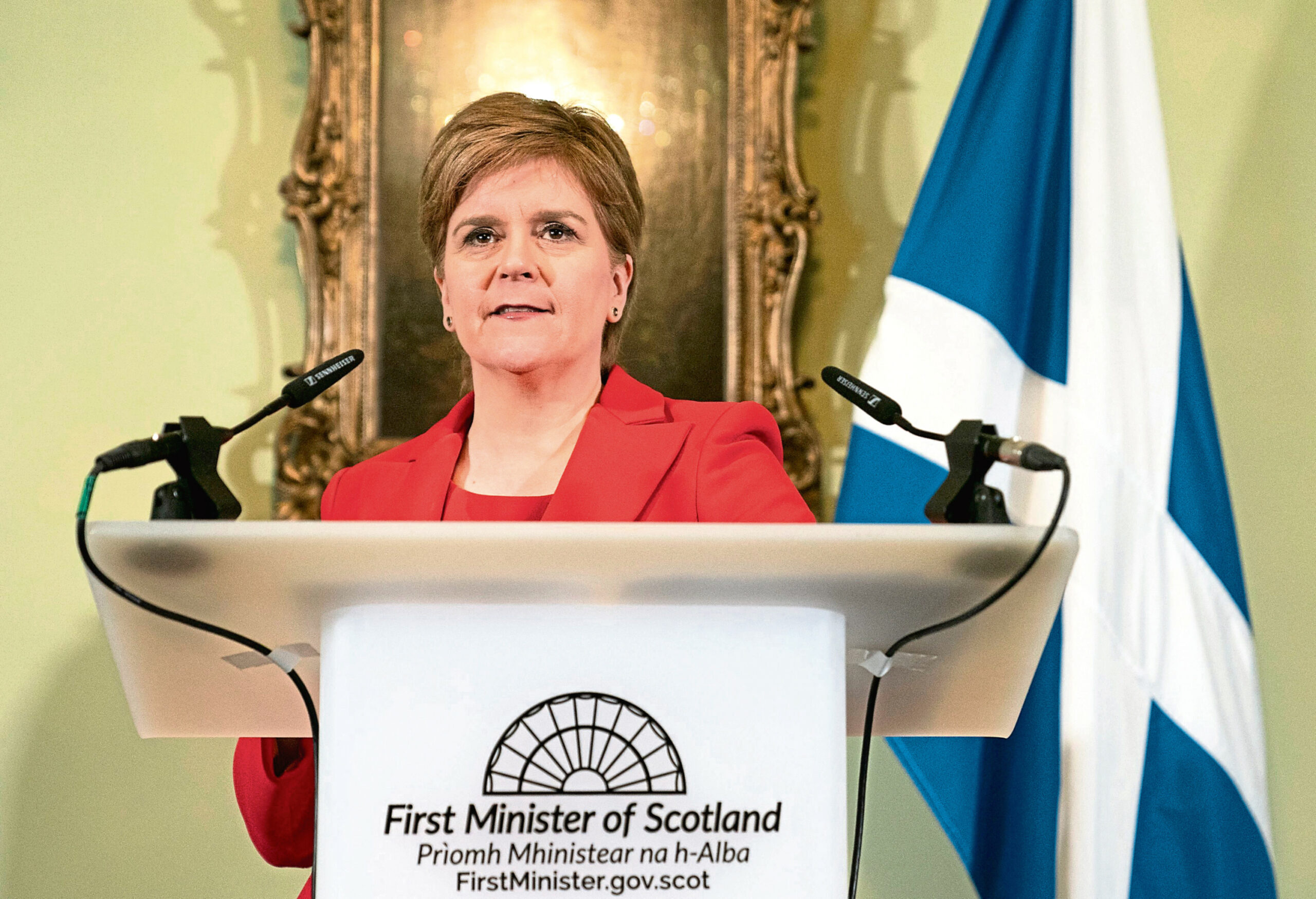There are three fundamental challenges the movement for independence has spent years failing to find solutions to, writes John Ferry.
In a matter of weeks, Scotland will have a new first minister. Attention at the moment is on the contest between the three candidates, which has already become a bitter and ugly fight.
But, soon enough, the new head of the Scottish Government will be in place, new ministers will be appointed, and we will be looking to see what fresh policies emerge as a result.
Will the coalition with the Scottish Green Party remain in place? Will the much-criticised deposit return scheme be delayed? These are key questions we should have answers to early on.
What about the big question, though – the question of independence? The failure to deliver a credible strategy to achieve secession was clearly a factor in pushing Nicola Sturgeon to resign. Will her successor prove more effective?
It seems unlikely. If Sturgeon, with her much-vaunted common touch and powers of persuasion, cannot move the dial on support for breaking away, then what chance will a Forbes, a Yousaf or a Regan have?

Linked to this is one important structural impediment that can only prove as difficult to overcome for the next first minister as the current one, which is trying to find a plausible economic case for Scotland exiting the union.
There have been mutterings that one of the key tasks for the next first minister will be finding that elusive economic case for independence. There has been no reflection, however, on the fact that Nicola Sturgeon and her team spent eight years failing to present the answers to the crucial economic questions. Is no one in the SNP prepared to ponder more deeply on why that is?
This is the problem when you start with the radical outcome you desire and then work backwards from there to make your case. Reality gets in the way, and you end up tying yourself in intellectual knots trying to deal with that reality, while remaining committed to the outcome. A more reasoned politics would start at the ground level and assess what challenges society faces, then work pragmatically forward from there to find solutions.
The big economic questions
Let’s remind ourselves of the big economic questions the Sturgeon administration failed to find answers to. The big one is currency.
The Salmon-Sturgeon plan for 2014 was for a newly seceded Scotland to continue to use sterling as part of a formal currency union with the remaining UK. That was a sensible economic plan, but it failed to take into account the fact that such an arrangement would create unacceptable risks for the rest of the UK, which is why the Treasury rejected the proposal.
With that possibility off the table, the best the Sturgeon administration could come up with was “sterlingisation”: unofficially continuing to use sterling without the support of the remaining UK and its central bank. The consensus among economists is that such an arrangement would be disastrous for the fledging new state, and would almost certainly lead to a severe economic crisis.
And then there is the problem of Scotland’s large structural fiscal deficit. The latest numbers show Scotland running a deficit of over 12% of GDP. If we exclude North Sea oil and gas revenues, then the deficit comes in at almost 16% of Scottish GDP.
There is no plausible scenario in which Scotland can cut away from the pooling and sharing of tax revenues across the UK without it leading to big tax rises, big spending cuts, or a combination of both for the new state.
The border with England is the third major economic issue. Brexit has shown us the consequences of leaving an economic union only to create trade barriers with your biggest trading partner. With the rest of the UK accounting for over 60% of Scotland’s exports, in trade terms, Scexit would be like Brexit on steroids.
New FM may continue using Sturgeon’s tactics
Currency, deficit and border. These are the three fundamental challenges the movement for secession has spent years failing to find solutions to. The next first minister, like Nicola Sturgeon, will discover that these are intractable economic problems. Like Sturgeon, the new FM will, therefore, most likely default to tactics of deflection and dwelling in fantasy instead of dealing with reality.
They will probably also talk up the emotional case for secession. It will be no surprise if the new first minister copies Sturgeon’s poisonous tactic of labelling opponents as “democracy deniers”. Indeed, in at least one TV interview in recent days, potential first minister Humza Yousaf has described the UK Government as “denying democracy”.
The deploying of such rhetoric was always a sign of weakness rather than strength; a signal that the argument is being lost and not won. The SNP lost the economic argument for secession long ago. It seems implausible they will suddenly find it post-Sturgeon.
John Ferry is a regular commentator on Scottish politics and economics, a contributor to think tank These Islands, and finance spokesperson for the Scottish Liberal Democrats


Conversation